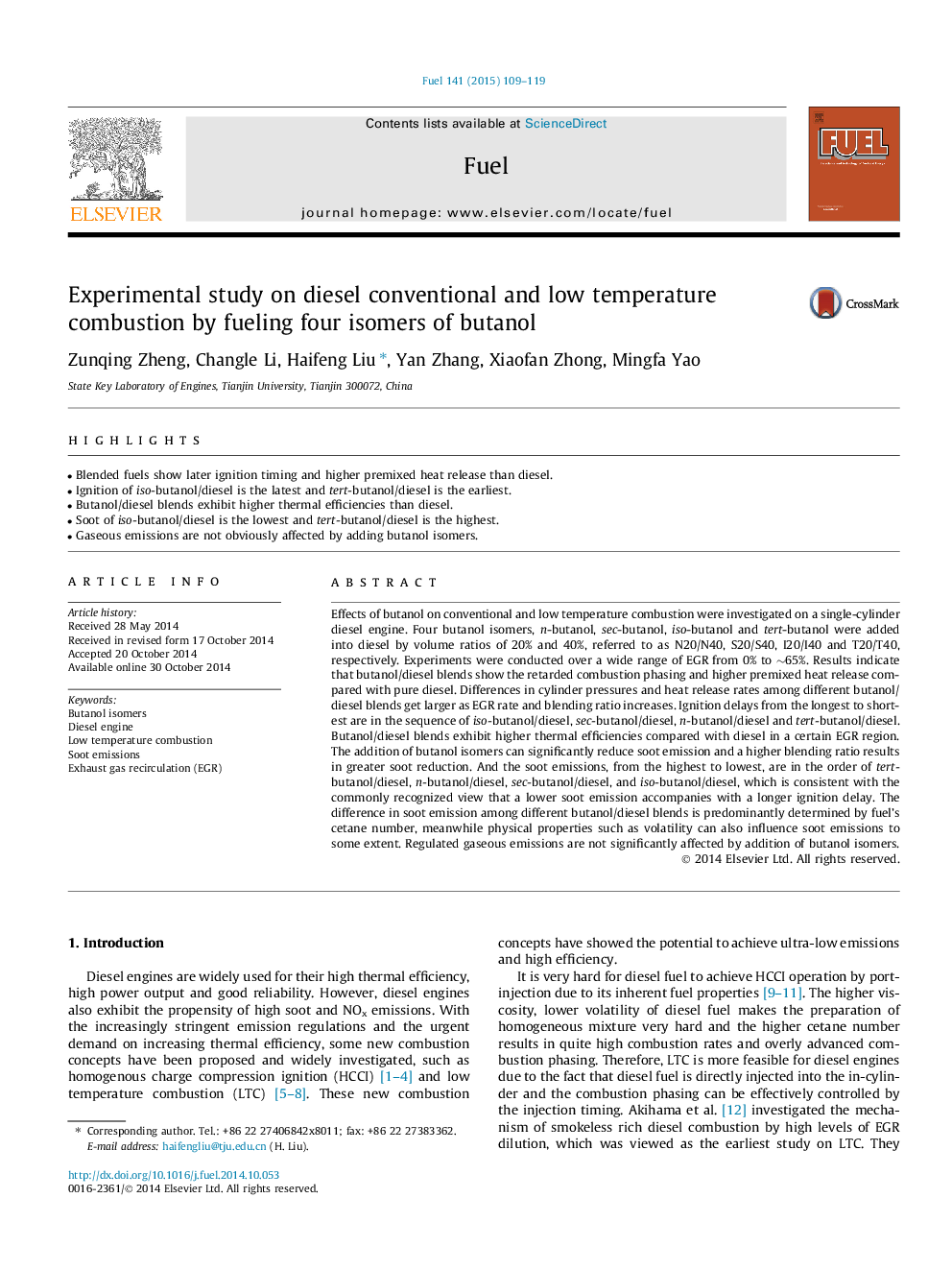| کد مقاله | کد نشریه | سال انتشار | مقاله انگلیسی | نسخه تمام متن |
|---|---|---|---|---|
| 205882 | 461127 | 2015 | 11 صفحه PDF | دانلود رایگان |
• Blended fuels show later ignition timing and higher premixed heat release than diesel.
• Ignition of iso-butanol/diesel is the latest and tert-butanol/diesel is the earliest.
• Butanol/diesel blends exhibit higher thermal efficiencies than diesel.
• Soot of iso-butanol/diesel is the lowest and tert-butanol/diesel is the highest.
• Gaseous emissions are not obviously affected by adding butanol isomers.
Effects of butanol on conventional and low temperature combustion were investigated on a single-cylinder diesel engine. Four butanol isomers, n-butanol, sec-butanol, iso-butanol and tert-butanol were added into diesel by volume ratios of 20% and 40%, referred to as N20/N40, S20/S40, I20/I40 and T20/T40, respectively. Experiments were conducted over a wide range of EGR from 0% to ∼65%. Results indicate that butanol/diesel blends show the retarded combustion phasing and higher premixed heat release compared with pure diesel. Differences in cylinder pressures and heat release rates among different butanol/diesel blends get larger as EGR rate and blending ratio increases. Ignition delays from the longest to shortest are in the sequence of iso-butanol/diesel, sec-butanol/diesel, n-butanol/diesel and tert-butanol/diesel. Butanol/diesel blends exhibit higher thermal efficiencies compared with diesel in a certain EGR region. The addition of butanol isomers can significantly reduce soot emission and a higher blending ratio results in greater soot reduction. And the soot emissions, from the highest to lowest, are in the order of tert-butanol/diesel, n-butanol/diesel, sec-butanol/diesel, and iso-butanol/diesel, which is consistent with the commonly recognized view that a lower soot emission accompanies with a longer ignition delay. The difference in soot emission among different butanol/diesel blends is predominantly determined by fuel’s cetane number, meanwhile physical properties such as volatility can also influence soot emissions to some extent. Regulated gaseous emissions are not significantly affected by addition of butanol isomers.
Journal: Fuel - Volume 141, 1 February 2015, Pages 109–119
